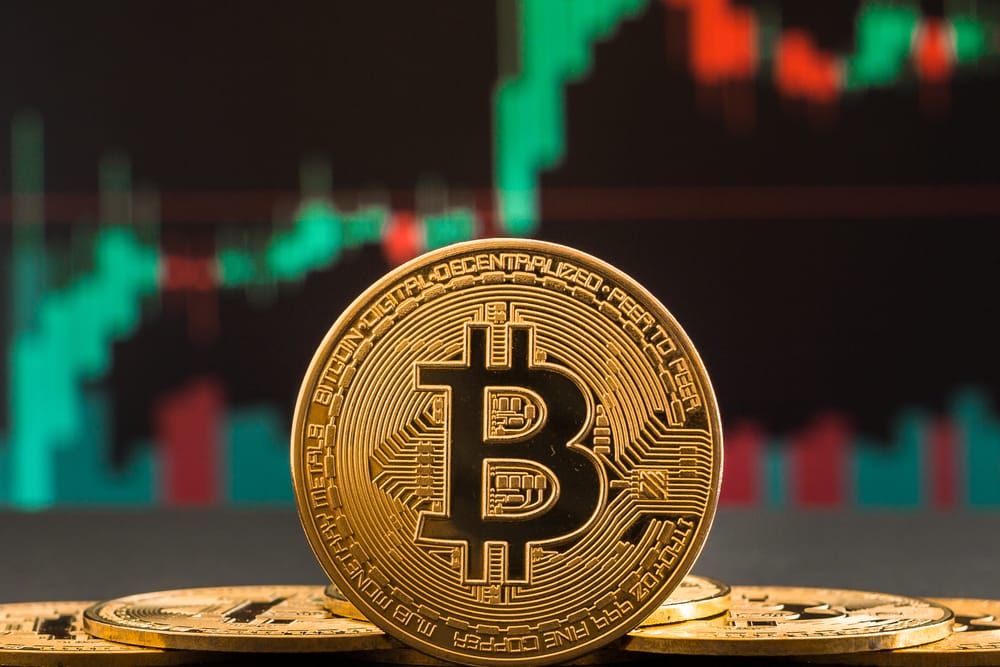Bitcoin Plummets After Iran Attack Triggers Crypto Market Sell-Off
Bitcoin plunged more than 8% after Iran’s attack on U.S. assets triggered a massive crypto market sell-off—here’s how global uncertainty is impacting digital currencies in 2025.

The cryptocurrency market plunged into turmoil on Saturday, following reports of an Iranian attack targeting U.S. military assets in the Middle East. Bitcoin, the world’s most valuable cryptocurrency, nosedived more than 8% within hours, dragging other digital assets lower and igniting a widespread sell-off across crypto exchanges.
Crypto Markets Recoil Amid Geopolitical Tensions
Cryptocurrency investors awoke to sharp losses after Iranian forces launched coordinated strikes on U.S. facilities in Iraq overnight, escalating already frayed tensions in the region. According to CNBC, Bitcoin tumbled below $55,000 for the first time in months, erasing nearly $200 billion in total digital asset market value.
Ethereum, Solana, and other major tokens also posted double-digit percentage losses, as risk aversion spread through blockchain-based financial markets. By midday in New York, the total cryptocurrency market capitalization—tracked by CoinMarketCap—had fallen more than 12% to just over $1.8 trillion.
Investors Seek Safety as Volatility Flares
The sudden geopolitical shock rattled a market that had shown renewed strength since the start of 2025, fueled by optimism over the next wave of spot Bitcoin exchange-traded funds (ETFs) and mainstream institutional adoption. Instead, investor sentiment rapidly turned negative.
“Cryptocurrencies are no longer completely immune to global events,” said Marcus Yeo, digital asset strategist at Exponential Capital, in an email to CNBC. “Today’s sell-off demonstrates that Bitcoin especially is behaving more like a risk asset than a safe haven during major crises.”
Bitcoin had previously been hailed by some advocates as “digital gold,” with the potential to act as a hedge against geopolitical disruptions and inflation. However, this week’s events suggest that, despite increasing maturity, the $1 trillion crypto asset class is still highly correlated to macroeconomic risk and investor sentiment.
Broader Financial Markets React
The destabilizing news also sent shockwaves through U.S. stock futures and drove oil prices higher. As of Sunday morning, S&P 500 futures were down 1.4%, while Brent crude oil surged above $90 a barrel, amid fears of supply disruptions in the Persian Gulf.
Traditional safe havens such as U.S. Treasurys and gold received a modest bid, reinforcing the notion that global investors turn to trusted assets in times of international crisis.
Key Quotes and Expert Perspectives
“The price action is a clear display that crypto assets can suffer swift drawdowns in response to events that generate uncertainty and risk-off dynamics,” said Nadia Mahmoud, an independent analyst covering global macro and digital currencies.
Some market observers remain optimistic about a rebound once tensions subside. “Long-term fundamentals for blockchain technology are still intact,” noted Lucas Choi, CIO of BlockTower Partners. “But these episodes remind us that crypto is not immune to panic-driven volatility.”
Implications for Crypto Adoption and Regulation
The latest market rout could further complicate ongoing regulatory efforts in Washington, where lawmakers are debating new rules governing digital assets and investor protections. Critics have seized on the volatility as evidence of crypto’s risks, while industry groups call for balanced regulations that support innovation.
“Today’s price movement gives regulators and institutional investors pause,” stated Ella Saunders, policy fellow at the Digital Asset Council. “But it also underlines the urgent need for clear, consistent rules in the crypto marketplace.”
Background: Crypto’s Role in Global Uncertainty
Cryptocurrencies have long been promoted as a tool for resisting censorship and maintaining access to funds during instability. However, the increased participation from global investors, hedge funds, and publicly traded companies has arguably made digital assets more vulnerable to traditional market cycles and geopolitical headlines.
The sell-off witnessed after Iran’s attack is the latest indication that crypto markets are maturing but remain highly sensitive to exogenous shocks.
How Long Will the Volatility Last?
Analysts say that crypto prices may remain under pressure in the short-term until there is greater clarity on the extent of the conflict and its potential fallout.
“Much depends on whether further escalations occur or whether the U.S. and Iran move to contain hostilities,” said Yeo. “For now, defensive positioning is likely to dominate.”
A Test of Resilience for Crypto
The dramatic sell-off underscores both the promise and vulnerability of the burgeoning digital asset sector. As traditional investors increasingly take positions in crypto, its fate is becoming intertwined with broader global trends—and its standing as crisis-proof “digital gold” is facing a crucial test.
Experts advise investors to monitor developments closely and recall that volatility comes hand-in-hand with the opportunities—and risks—that define digital assets.
Sources Used:
CNBC: Bitcoin plunges as Iran attack triggers crypto market sell-off
CoinMarketCap (market cap, price data)
Quotes and market data from financial analysts
Relevant background from Reuters, Financial Times, and Bloomberg (for context on market reactions and comments)


